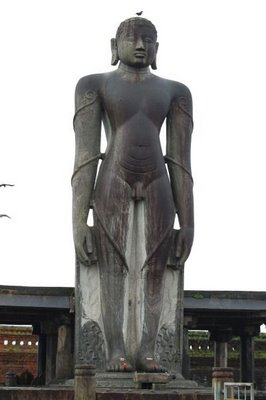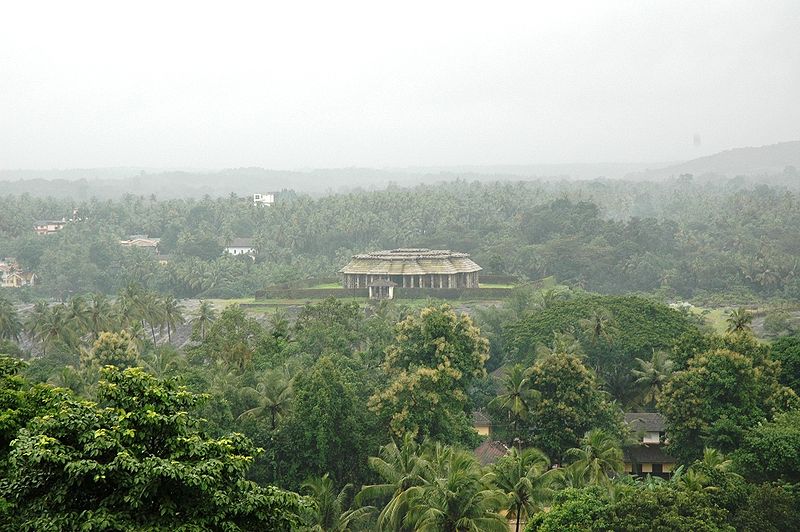Karkala Jain Temples
Karkala is a small town located in the southern part of Karnataka. The temples of Karkala, about 18 basadis, are mainly located on a hillock on the outskirts of the town.
Chathurmukha basadi
Chaturmukha Basadi is a symmetrical Jain temple, situated on a rocky hill at Karkala in Udupi District of Karnataka. Consecrated by Vir Pandya deva, the king of Bairarava family in 1432, the basadi was completed in 1586. It is built in the form of a square mandapa or hall, with a lofty doorway and pillared portico on each of its four sides. Since four identical doorways in four directions lead to the Garbhagriha, it is called Chaturmukha Basadi. The roof is flat and is made of huge granite slabs. In the Garbhagriha, one can see the standing statues of Ara, Malli, and Suyrata. Besides these, the images of the 24th Tirthankar and Yakshi Padmavati can also be found. There are a total of 108 pillars inside and outside the temple. This is the most celebrated temple in Karkala, and is referred to in the inscriptions as Tribhuvana Tilaka Jina Chaityalaya and Ratnaraya Dhama.
The art and architecture of the Karkala Jain basadis
The Jain temple at Karkala is a simple but splendid piece of architecture reflecting the devotion of the Jain people towards Gandharva, a Jain deity. A monolithic granite statue of Gandharva located within the precincts of the temple adds to the charm of this simple shrine of an ancient religion.
The basic structure of temples in India is a room or the Garbhagriha (sanctum sanctorum) where the idol of the main deity is kept. The temple is approached by a flight of steps and is often built on a platform. A porch covers the entrance to the temples, which is supported by carved pillars. A prominent roof called the shikhara surmounts the top of the Garbhagriha, and dominates the surroundings. As time went by, small temples grew into temple complexes. However the temples of the Hindus and the Jains have many similarities and dissimilarities in their making and outlook.
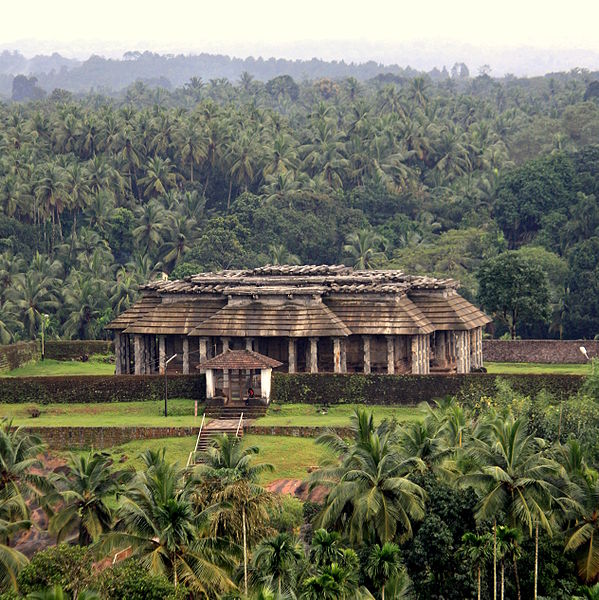
Caturmukha basadi
Temple architecture in India is broadly divided into the northern and southern styles. Temple architecture has been classified according to the form and shape of the shikhara and the distinctiveness of its decoration. The shikharas of the temples in south India tend to be made up of distinct horizontal levels that diminish to form a rough pyramid. Each level is decorated with miniature temple rooftops. Some south Indian temples, like the Minakshi temple, also have tall shikharas over elaborate gateways or gopurams, to add to the overall symmetry of the temple complex. The shikharas of the temples in north and central India, in contrast, resemble an upturned cone that is decorated with miniature conical shikharas. Some temples developed their own local flavor, while following the basic regional style.
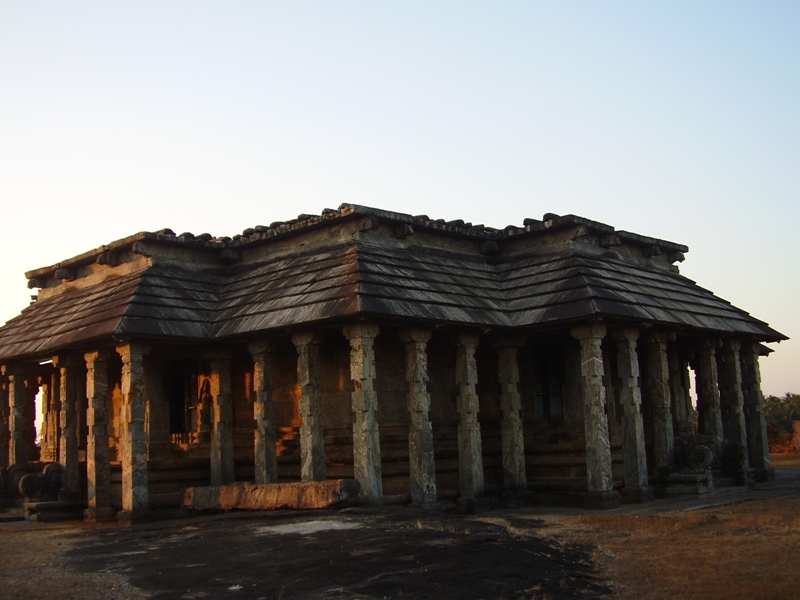
Caturmukha basadi
The Jain temple at Karkala, although located in the southern part of India, does not have the lavish shikharas and gopurams like most South Indian Hindu temples. It is completely Dravidian and simple in character and has a flat roof. Influences of Buddhist architecture can also be detected in this temple. The Jain temples are similar to their Hindu counterparts in many ways (basic structure, pillared galleries, carved pillars, etc), but the lavish and minute carvings and the use of marble - as Jains associate white with purity - set them apart from their Hindu counterparts.
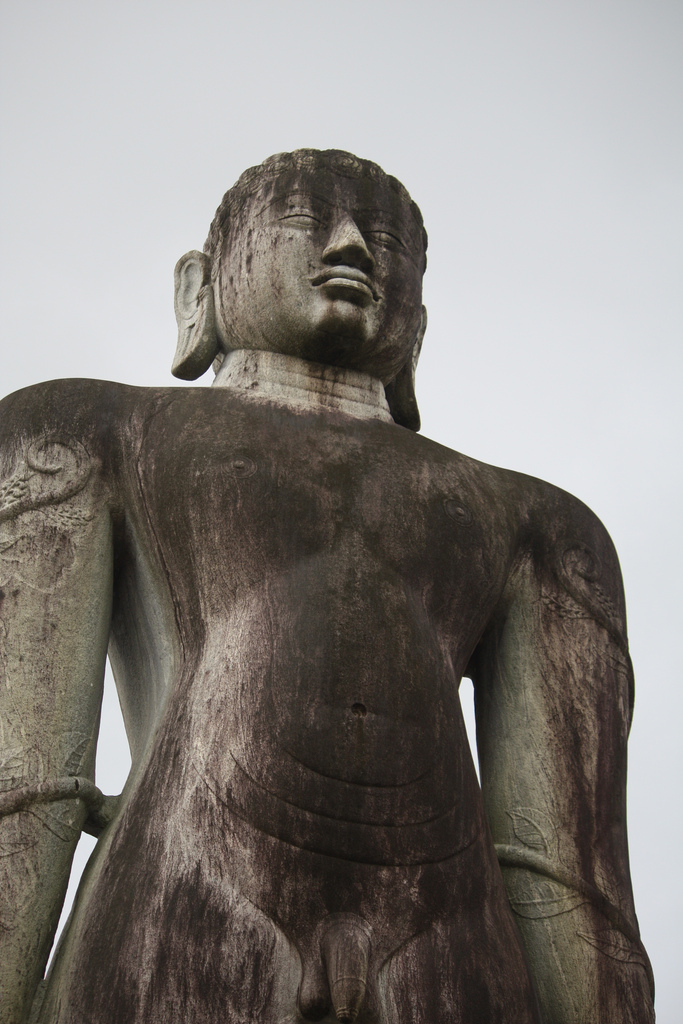
The Jain temples in the Southern part of India do not generally use marble but make use of granite, which lends strength to the structure but is extremely hard to work on. Other important aspects of the south Indian Jain temples, which set them apart from their northern counterparts, are their simplicity and huge monolithic sculptures of their deities.
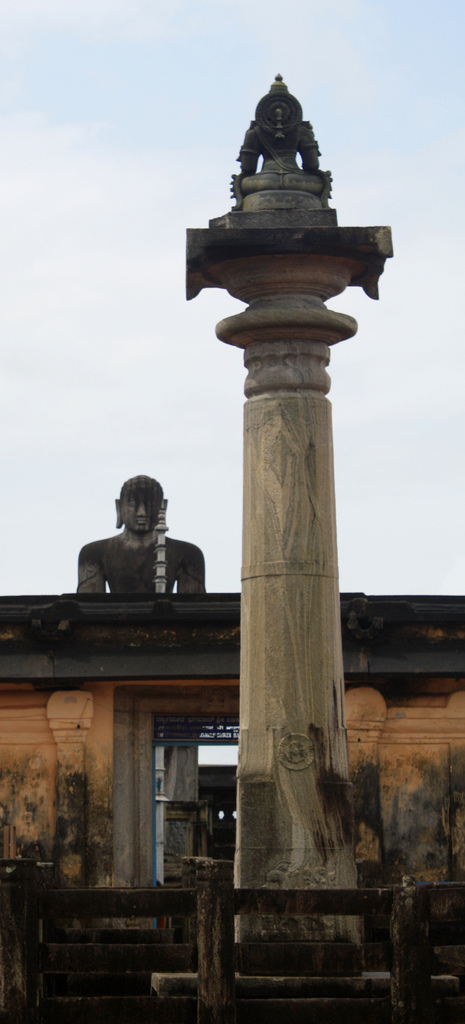
In the shadowy depths of the interiors of southern Karnataka, is the little town Karkala located. The Jain temple in Karkala stands witness to a different age dating back a thousand years. The lavish architecture within its simple stone framework, flowing stone sculptures, and rich carvings bear testimony to probably the combined work of talented sculptors, carvers, temple designers, architects long dead. Karkala is primarily home to a Jain stupa and a gigantic statue of the Jain god Gandharva, situated high on top of a hill with a stone staircase cut into the rock face of the rising hill. Surrounded by hills and a lagoon is the charming Karkala temple.
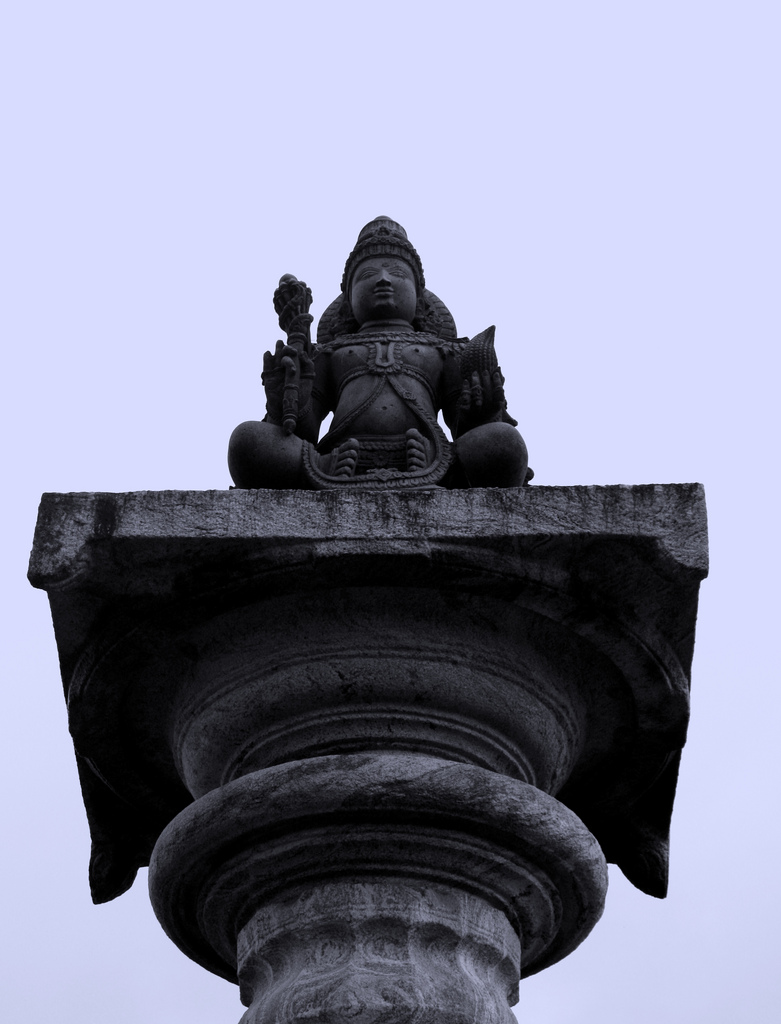
Temple towns are usually filled with mendicants, pilgrims, chanting pundits and the entire clamor that accompanies Indian pilgrimages, but Karkala is marked by its silence. There is a lot to see and study at Karkala. The Jains built this temple on top of a hill in AD 1000 to erect a memorial and place of worship to their god, the Gandharva. The statue of the Gandharva is worth seeing as it is marvelously carved out of a granite rock that rises 300 feet.
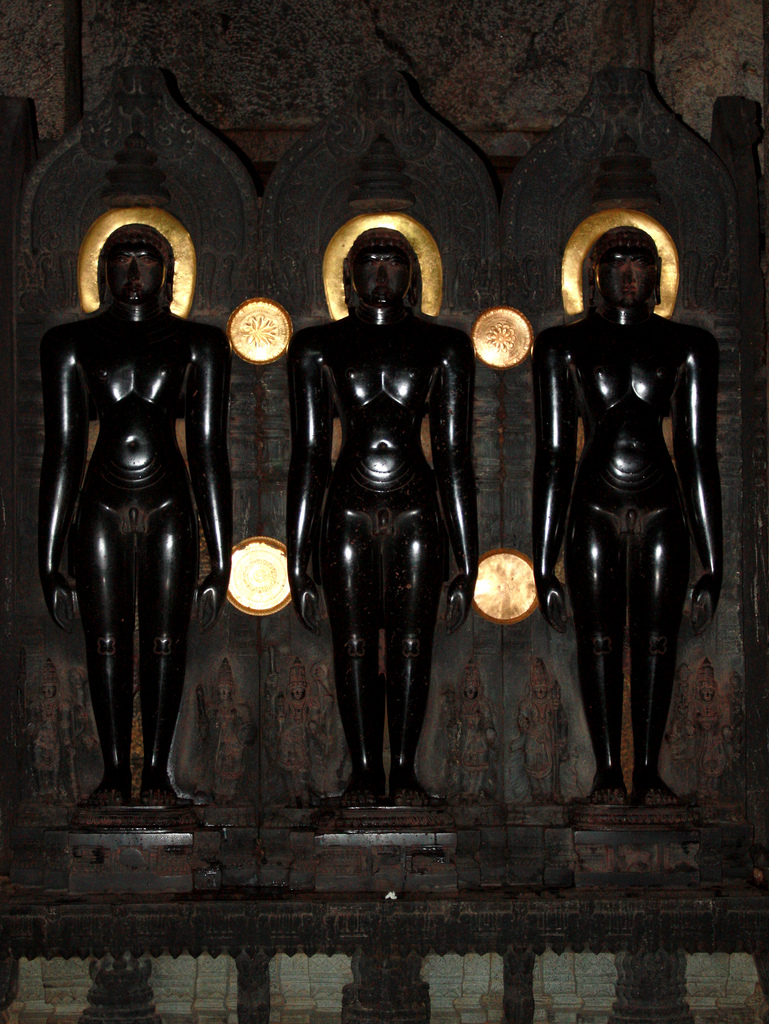
At the foot or the entrance to the Jain temple is a special set of footprints embedded in a rock that is preserved in a little shrine dedicated to the Gandharva. These footprints are unique because they are the actual impressions of the holy saint, dating back a thousand years or more. It is amazing how even after so many years the footprints still remain as they were. Worshipped by devotees who visit the temple annually, the footprints are believed to be a cosmic mystery as it is still unknown how the footprints made such an impression on solid stone and still remain the same even after over a thousand years.
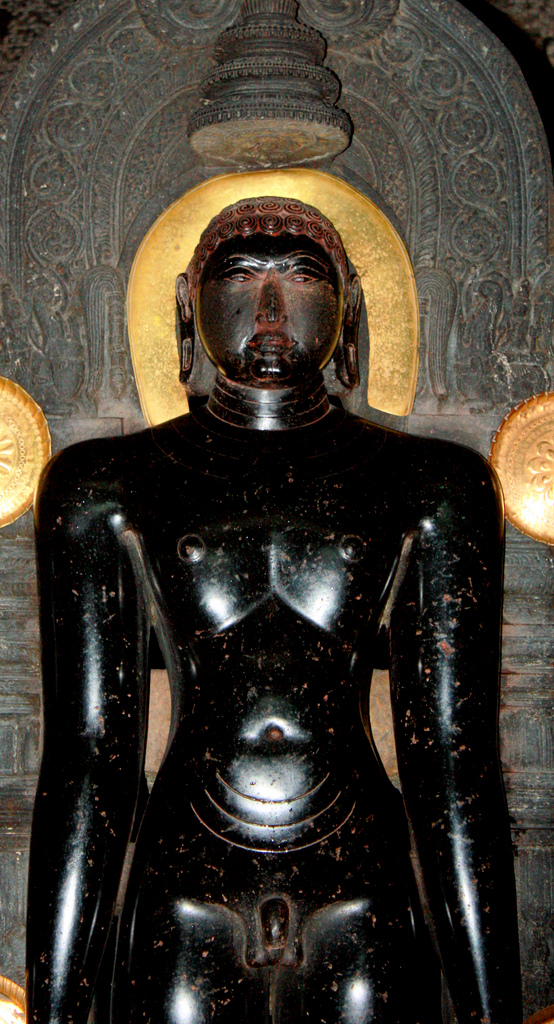
The gigantic rock statue of the Gandharva remains a rarity and is one of the three such statues in the whole of India. But the little place remains unmentioned and unknown to many. However, its environs are charming, the people friendly, and the place a delight to visit. The rich architecture, the florid Hoysala type carvings and the unique construction and architectural design of the staircases and porticos mark the temples of Karkala.
